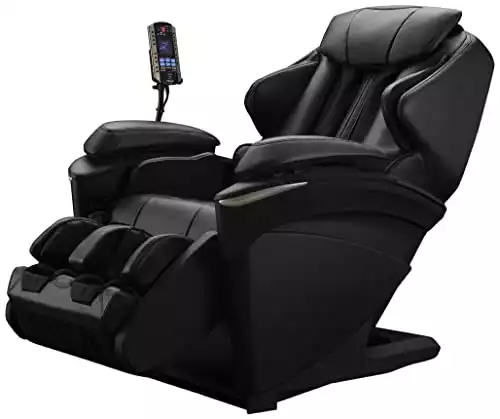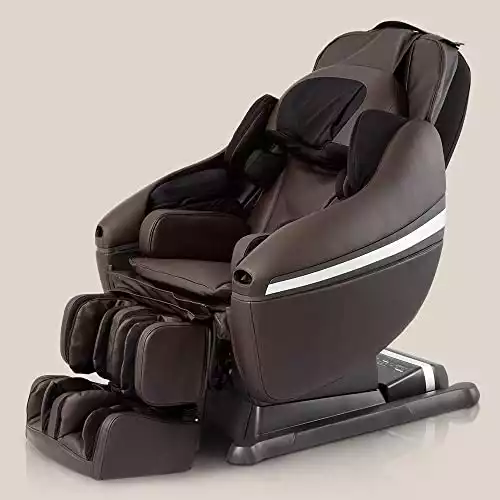The Panasonic EP MA73 and Inada DreamWave are similarly-priced and highly-rated high-end massage chairs. Both are considered to be leaders in massage technology, quality, and craftsmanship. So which is better or better for you? In this article, we’re walking you through the history of each brand, explaining the features these massage chairs have in common, and showing what sets them apart. Let’s go!
Panasonic EP MA73 vs Inada Dreamwave
|
4.6
|
4.6
|
|
26”H x 32.7”W x 79.6”D
45.3”H x 32.7”W x 48”D |
55"L X 37"W X 48"H
83"L X 38"W X 30"H |
|
265 lbs
|
250 lbs
|
|
191 lbs
|
265 lbs
|
|
5'0" to 6'5"
|
5'0" to 6'5"
|
|
3D Massage
Body Scan Calf and Foot Massage Quad Rollers Heat Therapy S-Track Adjustable Ottoman |
3D Massage
Body Scan Calf and Foot Massage Heat Therapy S-Track Vibration Massage Adjustable Ottoman Neck Traction Device |
|
11
|
16
|
|
7
|
7
|
45.3”H x 32.7”W x 48”D
Body Scan
Calf and Foot Massage
Quad Rollers
Heat Therapy
S-Track
Adjustable Ottoman
83"L X 38"W X 30"H
Body Scan
Calf and Foot Massage
Heat Therapy
S-Track
Vibration Massage
Adjustable Ottoman
Neck Traction Device
Features of the Panasonic EP MA73 and Inada DreamWave
Though the Panasonic EP MA73 and Inada DreamWave have features in common, the technology within each chair is unique since it’s engineered and owned by each brand individually.
For example, both chairs feature 3D rollers, but the roller technology and feel of each are different. As we walk you through the features, we’ll explain the variations between the two chairs.
Chair Design
Perhaps the biggest differences between the Inada DreamWave and Panasonic EP MA73 is the chair design and how they’re intended to be used.
The Inada DreamWave is designed to be a fully-encompassing massage chair. It looks more like a massage therapy cocoon than a chair — there’s no mistaking the Inada DreamWave for a regular recliner.
The Panasonic EP MA73, on the other hand, is designed to provide both high-quality massage treatment and be a livable recliner. So on the Panasonic EP MA73, you’ll see features like pop-up arm massagers and a retractable ottoman that help the chair double as a recliner when not in use.
Now, let’s get into what’s inside each chair.
Body Scan Technology
Both the Panasonic and the Inada Panasonic EP MA73 feature body scanning technology that maps your height, shape, and shiatsu points before administering a massage.
With body scan, the massage chairs can custom-fit your treatment. This is to ensure the rollers are targeting the correct areas of your neck and back — not hitting too high or too low.
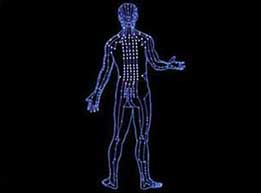
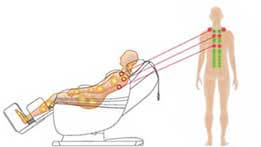
While they both have a body scan feature, the Inada DreamWave uses “profiles” as part of its program. So after a body scan is complete, it compares the data — your profile — with 106 profiles pre-programmed on the chair. The closest match is selected, and the rollers automatically adjust to match the profile.
3D Massage Rollers
The rollers on both massage chairs are 3D which means they have three-dimensional movements: side to side (horizontally), up and down (vertically), and inward (protruding).
Massage Roller Feel
The Inada DreamWave has wide rubber rollers that deliver a mild massage that’s similar to the feel of a masseuse’s palms. On the Panasonic EP MA73, however, narrower rollers provide a strong, penetrating massage similar to the feel of a masseuse’s thumbs.
But since both massage chairs are 3D, they each offer various intensity levels. Therefore, you can adjust the intensity to enjoy a gentle or intense massage on both chairs.
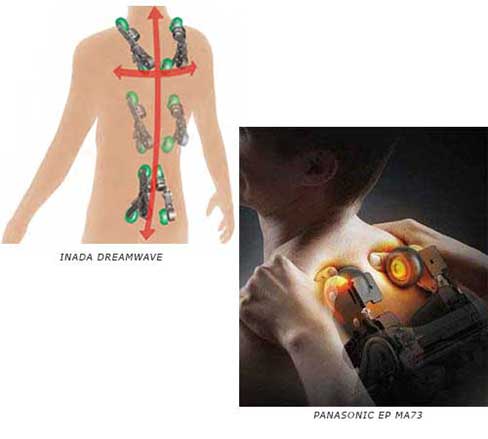
Massage Range
The Inada DreamWave has a 28-inch massage track that extends from the neck to the tailbone and provides coverage to the tops of the glutes. On the other hand, the Panasonic EP MA73 has a longer massage track at 32 inches, extending further into the seat for even more coverage. But since the Inada DreamWave is a fully-encompassing chair, it treats over 1,200 square inches of your body. It has the most comprehensive coverage of any massage chair.
Massage Style
Originally developed in Japan, shiatsu means “finger pressure,” and is often referred to as needleless acupuncture.
The massages on both chairs are based on shiatsu therapy. According to traditional Japanese and Chinese medicine, shiatsu points (also called acupressure points) are the locations on the body through which energy (“Chi” and “Qi” in Chinese and “Ki” in Japanese) flows. Together, the individual points form meridians, which are a network of shiatsu points that correspond to specific organ systems in the body.
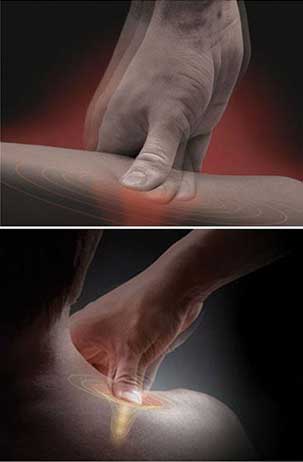
It’s believed that when a meridian is blocked, an imbalance occurs which can result in emotional stress or physical illness. Therapies like acupressure and shiatsu massage attempt to remove these blocks and bring alignment back to the body’s energy system. Therefore, restoring health and well-being.
Trapezius Massage
Both the Inada DreamWave and the Panasonic EP MA73 feature trapezius massage, though in different ways. Traditionally, trapezius massage has been limited to massage chairs since parts of the muscle don’t touch the backrest, making it a difficult area to reach for both airbags and rollers. To solve that problem, massage chair companies have had to introduce creative technology to treat this area.
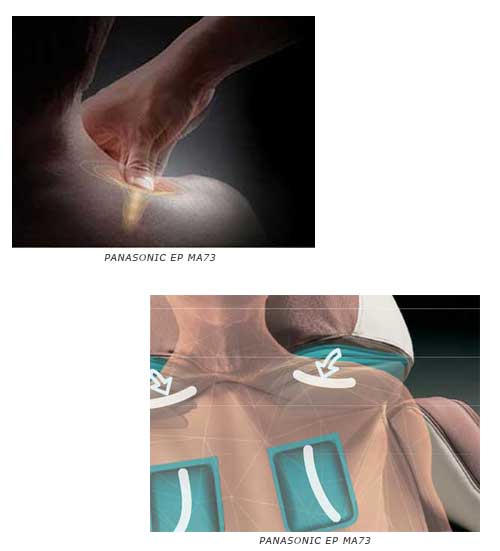
Air Massage
Airbags are a go-to massage component for the majority of massage manufacturers simply because they can go where rollers can’t — like the sides of the shoulders and hips.
Typically, airbags provide one type of massage: compression. During compression, airbags inflate and deflate, pressing and releasing an area.
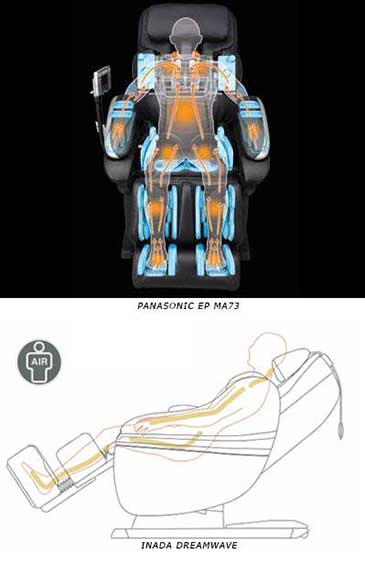
When the airbags inflate, blood and stagnant fluids are moved out, and when they deflate, new blood and oxygen move in. In other words, compression massage is great for circulation.
Let’s take a closer look at the air massages on the Inada DreamWave and Panasonic EP MA73.
Stretch Programs
The Panasonic EP MA73 and the Inada DreamWave both feature stretch programs, but they operate very differently.
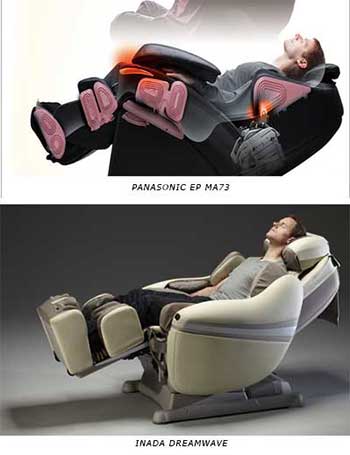
Auto Massage Programs
Another difference between the Inada DreamWave and the Panasonic EP MA73 is the number and types of auto-massage programs.
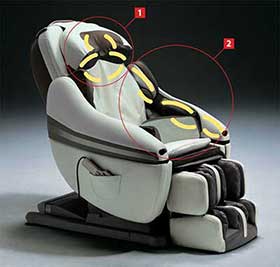
Heat Therapy
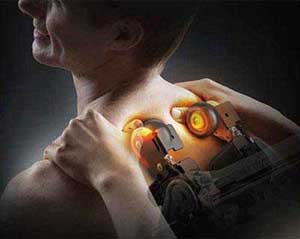
Vibration Massage
A feature you’ll only find on the Inada DreamWave is vibration massage. High-frequency vibration plates in the seat and lower back of the chair stimulate the muscles and circulation through the smallest blood vessels, also known as microcirculation. The vibration massage can be turned on, off, or added to any auto program.
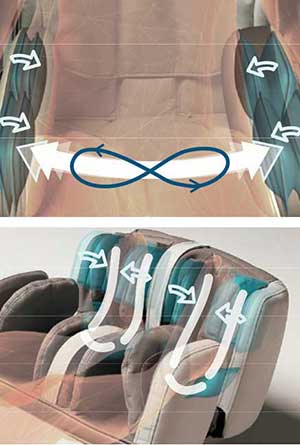
Remote Control
Another difference between the Inada DreamWave and Panasonic EP MA73 is the remote control.
The remote on the Inada DreamWave looks out of place compared to the futuristic look of the chair. However, it is a simple remote and is easy to use. The remote on the Panasonic EP MA73 fits the aesthetic of the chair: it’s sleek and high-tech. And fortunately, is also easy to navigate and use.
Customer Support and Warranty
Inada has a responsive customer support team. If something breaks on the DreamWave during the three-year all-parts and labor warranty period, Inada will come to your home or business to repair the chair — no matter where. Panasonic, on the other hand, doesn’t always offer in-home repairs.
So, if something breaks within the three-year warranty or 1,000 hours (whichever comes first) period, the chair will be picked up by an authorized Panasonic service center for repair and then returned. The downside of Panasonic’s take-and-repair system is that if you don’t live close to one of their service centers, it might take some time to get your chair repaired. Though some repairs are eligible for in-home service.
Both the Inada DreamWave and Panasonic EP MA73 have an optional five-year extended warranty.
About Panasonic
Panasonic was founded in 1918 by Japanese industrialist Konosuke Matsushita. Throughout his career, Matsushita dedicated himself to the production of high-quality, low-cost products.
This he believed, would “enhance the quality of life throughout the world.”
In 1929, he formulated the Basic Management Objective that continues to outline Panasonic’s business mission:
“To devote themselves to the progress and development of society and the well-being of people through their business activities.”
Today, Panasonic provides some of the world’s most advanced electronic technology and products like televisions, digital cameras, and, of course, massage chairs.
The first Panasonic massage chair was produced over 50 years ago in 1969. Panasonic massage chairs were the first to be endorsed by the American Chiropractic Association (ACA) as being valid complements to chiropractic treatment.
And while the massage chairs are designed and engineered in Japan, they’re manufactured in China.
About Inada
Established in 1962 in Japan, Inada is one of the oldest massage chair companies in the world and is credited with creating the first ever automatic massage chair.
Its founder and current president, Nichimu Inada, started the company when he was 22 years old. Though his business had periods of producing products other than massage chairs, Inada had a change in perspective after meeting Kazuo Inamori, President of the Kyocera Corporation.
He encouraged him to question his values and life’s purpose. After which, Inada concluded, “in order to make massage chairs as truly valuable products for the world and people, we need to devote our undivided attention to and specialize in massage chairs.”
Inada has stayed true to its singular vision ever since. Today, Inada massage chairs are still designed, engineered, and manufactured in Japan — the most competitive massage chair market in the world. And as one of the first, Inada has led the market in terms of massage innovation.
Here’s a look at a few of Inada’s contributions to the massage chair industry:
Panasonic EP MA73 vs Inada DreamWave Final Thoughts
The Inada DreamWave and Panasonic EP MA73 share features like 3D massage rollers, acupressure plates, body scan technology, and trapezius massage. However, how each chair executes these features is so different it’s tough to compare. While both chairs deliver an excellent massage, they’re designed with various users in mind.
The Inada DreamWave is a massage therapy chair through and through. On the other hand, the Panasonic EP MA73 is a massage therapy chair that can double as a recliner. With the Inada DreamWave, you get a level of massage coverage that you can’t with any other chair — your whole body is enveloped in massage. On the Panasonic EP MA73, however, you get additional features like heated rollers and roller massage for the trapezius.
So which is better between Panasonic EP MA73 vs Inada DreamWave? There’s no clear answer, and it depends on what you like. But with either, you’re investing in one of the best massage chairs money can buy. We hope our Panasonic EP MA73 vs. Inada DreamWave review helped make your decision process a little easier.
Panasonic Official Support
Inada Official Support
References & Resources
- Panasonic, Official Brand Website.
- Inada, Official Brand Website.
- What is Shiatsu Massage Theraphy?, Acupuncture Massage College.
- Massage Therapy for Neck and Shoulder Pain: A Systematic Review and Meta-Analysis, National Institutes of Health.
- The effect of compressed air massage on skin blood flow and temperature, US National Library of Medicine.
- Benefits of Hot Stone Massage, Live Strong.
- How Can Massage Help My Health and Wellbeing?, Taking Charge.
